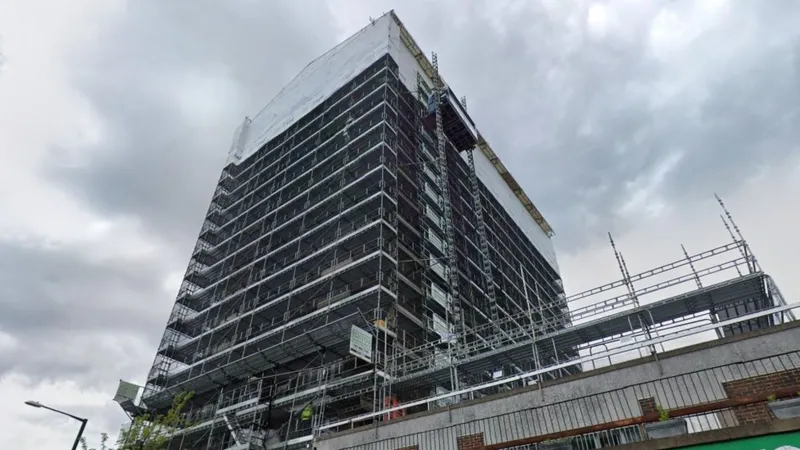Recent reports about Southern Housing tenants living with persistent damp and dangerous black mould show how quickly housing disrepair can harm physical and mental health. Cases like Victoria Beeching’s (black mould in a baby’s cot), Anna Dewey’s family (wet clothes and food ruined) and Jessica Pourasghar’s household (rising damp rendering bedrooms unusable) underline the urgency of prompt, effective action.
Immediate steps to protect your family
1. Prioritise safety and health
- If anyone is unwell because of the condition (breathing difficulties, asthma flare-ups, recurrent infections), seek medical attention immediately and ask the clinician to record the housing conditions in medical notes and to provide a supporting letter.
- If the property feels unsafe or uninhabitable, contact your local council’s environmental health team straight away — they can carry out a hazard assessment under the Housing Health and Safety Rating System (HHSRS).
2. Report the problem in writing
- Always report damp and mould in writing (email or letter). State the problem clearly, dates, and the actions you want (repair, inspection, mould testing, rehousing).
- Keep copies of every communication and note the date and time of any phone calls and who you spoke to.
Collect strong evidence
- Photograph and video the mould/damp (wide shots and close-ups) with timestamps where possible.
- Keep damaged items (clothing, bedding, toys) and record their replacement cost.
- Save any correspondence from doctors, school letters, or NHS referrals that mention health effects linked to the home conditions.
- Keep a symptom diary for anyone affected — dates, symptoms, and any healthcare visits.
- Log every visit by the housing provider, contractors, or inspectors (date, who attended, what was done).

How to escalate if repairs aren’t happening
Step-by-step escalation
- Use the landlord’s formal complaints procedure — submit a written complaint and keep evidence you did so.
- If the landlord’s response is unsatisfactory or delayed, contact your local council’s environmental health department to request a hazard inspection.
- If you’re social housing tenant and the internal complaint process is exhausted, complain to the Housing Ombudsman (you typically need to go through the landlord’s process first).
- Consider contacting your local councillor or MP if the landlord’s failings put vulnerable people at risk — this can increase pressure and publicity.
Useful formal routes
- Environmental Health enforcement (local authority) — can serve improvement notices or emergency remedial action.
- Housing Ombudsman — deals with complaints about social landlords once internal processes are complete.
- Homelessness duty (local council) — if a property is made genuinely uninhabitable, the council may have a duty to assist with rehousing.
Legal options and what you can claim
If your landlord fails to act, there are several legal pathways to consider. These vary depending on whether you are a tenant (social or private), a leaseholder, or an owner-occupier whose freeholder is responsible for external repairs.
- Disrepair claims — to force repairs and seek compensation for damage to belongings, losses, and sometimes for distress and inconvenience.
- Personal injury claims — where health has been harmed by exposure to damp and mould (requires medical evidence linking condition to the housing).
- Injunctions or court orders — to compel a landlord to carry out urgent works.
- Relocation costs and interim accommodation — where a property is unsafe, you may be entitled to temporary rehousing or reimbursement of reasonable costs incurred.
What you should expect from a specialist solicitor
- Clear assessment of your case, likely outcomes and costs upfront.
- Help to gather evidence (medical reports, surveys, contractor reports).
- Negotiation with the landlord and, if needed, issuing a claim under the pre-action protocol for housing disrepair.
- Pursuing compensation for losses, damage to belongings, and where appropriate, for physical and mental harm.
Timescales and practical expectations
Landlords should take damp and mould complaints seriously and act quickly. In practice, the speed and quality of action vary. If you are repeatedly being offered only cosmetic fixes (washes and paint) without addressing sources such as penetrating damp, rising damp, faulty roof/guttering, or inadequate ventilation, escalate — those temporary fixes will often fail.
When to involve FDM Solicitors
If your landlord is unresponsive, offers only recurring temporary treatments, or your family’s health is affected, it’s sensible to get specialist legal advice early. FDM Solicitors work on housing disrepair and have a track record of securing meaningful remedies for tenants and leaseholders — including court outcomes and negotiated settlements. For example, we have previously helped clients obtain significant settlements and the repairs they needed to make homes safe and habitable.
To discuss your situation confidentially, visit our website: FDM Solicitors or contact our team via the contact page: https://fdmsolicitors.co.uk/contact-us/.
Checklist: immediate actions
- Report the issue in writing to your landlord and keep copies.
- See a doctor and get a medical letter linking health to housing conditions.
- Photograph/video the problem and keep damaged property.
- Contact Environmental Health if repairs are not completed promptly.
- Escalate to the Housing Ombudsman after exhausting the landlord’s complaints process.
- Seek legal advice early if repairs are not made or health is affected.
Final note
Persistent damp and mould are not just aesthetic problems — they can cause real, lasting harm. If you are repeatedly told that only surface treatments are necessary, but the mould returns, take steps now to gather evidence and escalate the problem. You do not have to accept living in conditions that make you or your family ill.
For advice specific to your circumstances, get in touch with our housing disrepair team. We can explain your options and help to push for the repairs, rehousing or compensation you may be entitled to.
Original article from the BBC located here.






